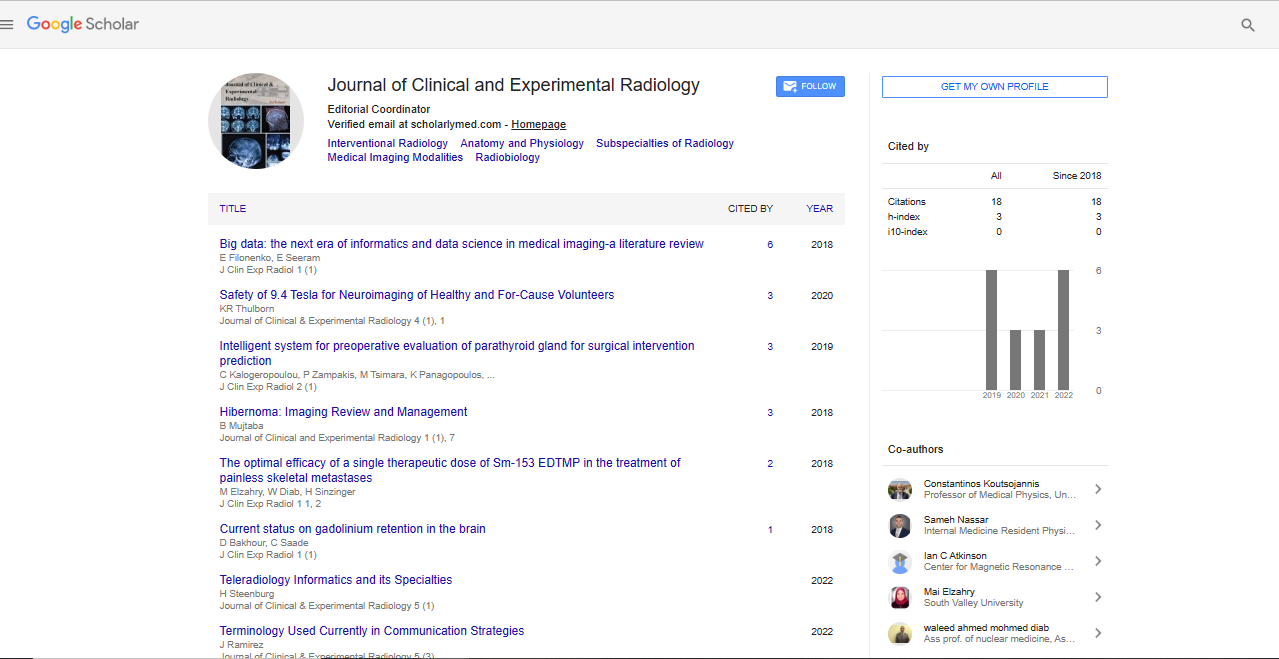Editorial, J Clin Exp Radiol Vol: 4 Issue: 6
Medical Procedure is a Typical Way to Deal with Malignant Growth Therapy
Finn Peterson *
University of Nairobi Medical School, Nairobi, Kenya
*Corresponding Author:Finn Peterson
University of Nairobi Medical School, Nairobi, Kenya
Abstract
A careful oncologist eliminates the tumor and close by tissue during a medical procedure. The person likewise plays out particular sorts of biopsies to help analyze disease. A radiation oncologist treats malignancy utilizing radiation treatment. Careful oncology is the field of malignant growth care that centers on a medical procedure to analyze stage and treat disease, and to deal with some malignant growth related manifestations. Careful oncologists are general specialists with strength preparing in techniques for diagnosing, arranging (deciding the phase of disease), or eliminating malignant developments. Medical procedure is a typical way to deal with malignant growth therapy, and careful resection of a tumor can be performed for some sorts of disease.
Keywords: Careful oncologist, Radiation treatment, Chemotherapy
Abstract
Metastasis suppressor genes (MS genes) are genes that play important places in inhibiting the process of cancer metastasis without precluding growth of the primary excrescence. Identification of these genes and understanding their functions are critical for disquisition of cancer metastasis. Excrescence suppressor genes are normal genes that decelerate down cell division, form DNA miscalculations, or tell cells when to die (a process known as apoptosis or programmed cell death). When excrescence suppressor genes do not work duly, cells can grow out of control, which can lead to cancer. However, it‚??ll affect in cancer, if the cell grows uncontrollably. When a excrescence suppressor gene is shifted, it results in a loss or reduction in its function. In combination with other inheritable mutations, this could allow the cell to grow abnormally. And they may ultimately form an excrescence. Exemplifications of excrescence suppressor genes include BRCA1, BRCA2, and p53 or TP53.
Germline mutations in BRCA1 or BRCA2 genes increase a woman‚??s threat of developing heritable bone or ovarian cancers and a man‚??s threat of developing heritable prostate or bone cancers. Exemplifications of suppressor genes like p53, the INK4 and PTEN excrescence suppressor genes are veritably constantly shifted in several common cancers, including lung cancer, prostate cancer, and carcinoma. Two other excrescence suppressor genes (APC and MADR2) are constantly deleted or shifted in colon cancers. Cancers are caused by damage to the DNA in your cells. These changes are called ‚??gene mutations.‚?Ě Gene mutations can make up in cells in your body over time. Cells with too numerous mutations may stop working typically, grow out of control and come cancerous. A excrescence suppressor gene directs the product of a protein that‚??s part of the system that regulates cell division. The excrescence suppressor protein plays a part in keeping cell division in check.
When shifted, an excrescence suppressor gene is unfit to do its job, and as a result unbridled cell growth may do. In discrepancy to oncogenes, which are actuated by mutation of only one of the two gene clones, excrescence suppressor genes are inactivated by point mutations or omission in both alleles of the gene in a ‚??two megahit‚?Ě fashion. Mutations that inactivate excrescence suppressor genes, called loss-of- function mutations, are frequently point mutations or small elisions that disrupt the function of the protein that‚??s decoded by the gene; chromosomal elisions or breaks that cancel the excrescence suppressor gene; or cases of physical recombination. Methylation and expression gene features can identify implicit excrescence suppressor and oncogenic geste in colorful forms of cancer (3). Likewise, this epigenetic significance can be linked when both expression and methylation data types are examined at amplified and deleted CNV changes.
The p53 gene is a type of excrescence suppressor gene. Also called TP53 gene and excrescence protein p53 gene. The APC gene is an excrescence suppressor gene; it typically helps keep cell growth in check. In people with inherited changes in the APC gene, this ‚??boscage‚?Ě on cell growth is turned off, causing hundreds of cysts to form in the colon. Over time, cancer will nearly always develop in one or further of these cysts.
 Spanish
Spanish  Chinese
Chinese  Russian
Russian  German
German  French
French  Japanese
Japanese  Portuguese
Portuguese  Hindi
Hindi 